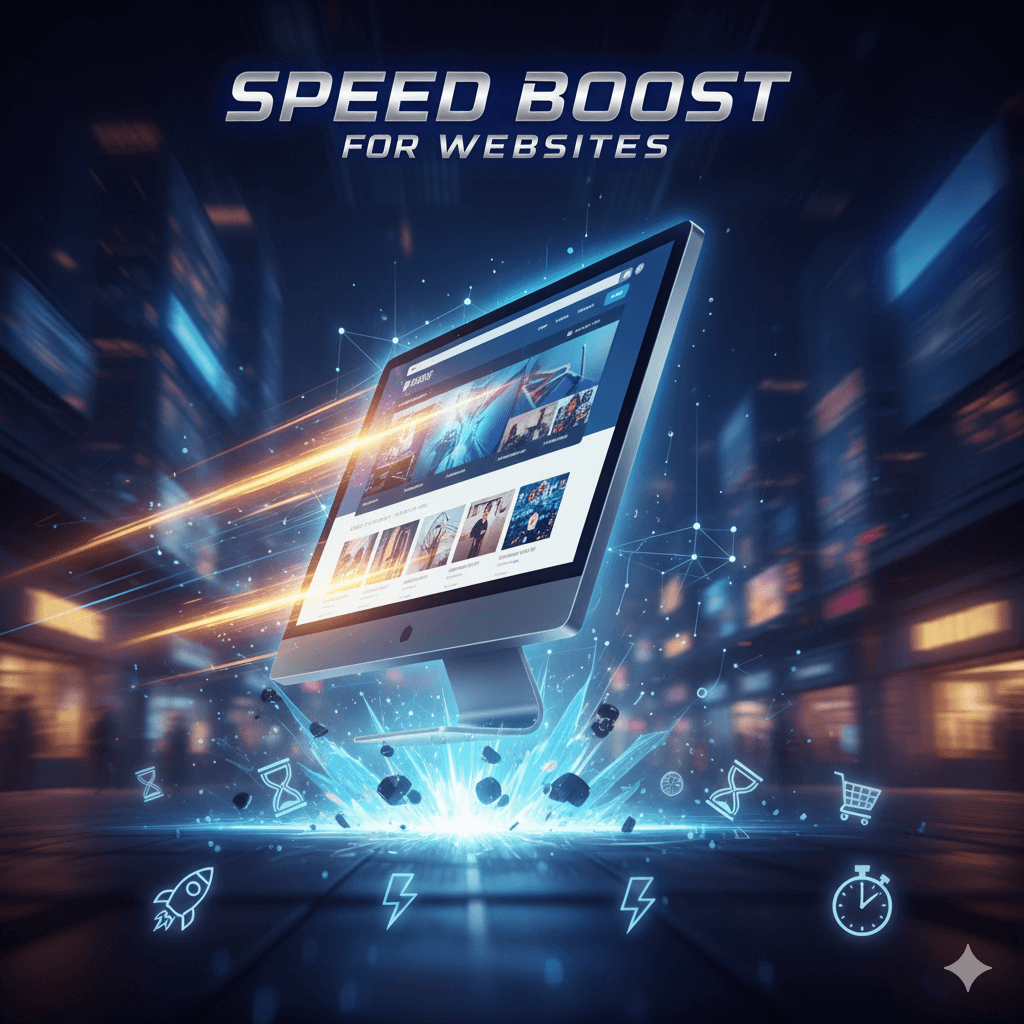Imagine you’re shopping online for the perfect gift. You click on a promising link, only to be met with a loading icon that seems to spin forever. You wait a few seconds, get frustrated, and click the back button. You’ve just become another lost sale for a slow eCommerce store.
In today’s competitive online market, speed isn’t just a feature; it’s a necessity. Studies show that if a page takes more than a couple of seconds to load, a significant percentage of potential customers will leave and likely never return. A slow website directly translates to lost revenue.
Let’s look at how you can measure your store’s performance and take actionable steps to make it blazing fast.
How to Measure Your Store’s Speed
Before you start making changes, you need a baseline. Understanding your current performance will help you track your improvements. Here are a few excellent, free tools to measure your site speed:
- Google PageSpeed Insights: Provides performance scores for both mobile and desktop directly from Google, along with tailored recommendations.
- GTmetrix: Offers a detailed performance report, breaking down metrics like “Time to First Byte” and “Fully Loaded Time” to pinpoint specific issues.
- Pingdom: Features a user-friendly interface and allows you to test your site’s load time from various geographic locations.
Run your site through a few of these tools to get a comprehensive picture of your current speed. Now, let’s get to work on improving it.

1. Build on a Solid Foundation: High-Quality Hosting
Your web host is the engine of your online store. If the engine is weak, nothing else you do will matter. A cheap, shared hosting plan might seem cost-effective, but it often means your store is sharing resources with thousands of other websites on the same server. This can lead to dramatic slowdowns during peak traffic.
For a serious WooCommerce store, invest in a host that specializes in WordPress and WooCommerce. Look for features like:
- Server-side caching
- High-performance SSD (Solid State Drive) storage
- Sufficient RAM and processing power
- The latest versions of software like PHP and MySQL
2. Choose a Lightweight and Optimized Theme
Your theme dictates the design and layout of your store, but it also contributes significantly to its code-bloat. A complex theme with dozens of built-in features, page builders, and flashy animations adds more files (CSS and JavaScript) that the browser has to load.
When choosing a theme, prioritize speed and simplicity. You can run a theme’s demo page through the speed testing tools mentioned above to see how it performs. A well-coded theme like WooCommerce’s own Storefront is a fantastic, lightweight starting point that can be customized without sacrificing performance.
3. Optimize Your Images for the Web
For an online store, high-quality images are non-negotiable. However, large, unoptimized image files are one of the biggest culprits of slow load times. The key is to find the perfect balance between quality and file size.
- Compress Images: Use a plugin like Smush or EWWW Image Optimizer to automatically compress images upon upload without a noticeable drop in quality.
- Use the Right Format: Use JPEGs for product photos and PNGs for images that require a transparent background.
- Implement Lazy Loading: This clever technique delays the loading of images until a user scrolls down to them. This dramatically speeds up the initial page load, especially for long product pages or category archives.
4. Be Strategic and Smart with Plugins
The power of WordPress and WooCommerce lies in their extensibility through plugins. However, it’s easy to fall into the trap of installing a plugin for every minor feature. Each active plugin adds code to your site, increases database queries, and sends more requests to your server.
It’s not about the number of plugins, but their quality. A single poorly coded plugin can slow your site down more than 20 well-coded ones. Regularly audit your installed plugins. If you’re not using one, deactivate and delete it. Choose reputable plugins from trusted sources that are frequently updated.
You can try Kkey Speed Optimizer completely free for 30 days at kkey.io. No credit card is needed to get started. Stop losing customers to slow load times and give your store the performance boost it deserves.
5. Leverage Caching and a Content Delivery Network (CDN)
Caching is like creating a temporary memory for your website. When a visitor arrives, their browser has to load all your assets (images, code, etc.). A caching plugin creates a static HTML version of your page, which is served much more quickly to subsequent visitors. It dramatically reduces the load on your server.
A Content Delivery Network (CDN) takes this a step further. It stores copies of your site’s static assets (like images and CSS files) on a global network of servers. When a customer from another country visits your store, the CDN delivers those assets from a server physically closest to them, significantly reducing latency and speeding up load times for your international audience.
You can try Kkey Speed Optimizer completely free for 30 days at kkey.io. No credit card is needed to get started. Stop losing customers to slow load times and give your store the performance boost it deserves.
6. Keep Your Entire Tech Stack Updated
Outdated software is not just a security risk; it’s a performance bottleneck. Updates to WordPress core, your theme, and your plugins often include performance enhancements and optimized code.
Most importantly, ensure you are running a recent version of PHP, the programming language WordPress is built on. Each new version of PHP brings significant speed improvements. You can usually update your PHP version through your hosting control panel, or you can ask your host’s support team to do it for you.
7. Clean and Optimize Your Database
Over time, your WooCommerce database accumulates a lot of “junk” data—things like old post revisions, trashed comments, expired transients, and old order information. This bloated database forces your server to work harder to find the information it needs, which slows down everything from the admin dashboard to the customer-facing storefront.
Use a database optimization plugin to periodically clean up this unnecessary data, keeping your database lean and efficient.
The Easiest Way to a Faster Store
Implementing all these optimizations can be a daunting and time-consuming task, especially if you aren’t a developer. You might need multiple plugins for caching, image optimization, asset management, and database cleaning, which can create their own conflicts.
This is why we recommend Kkey Speed Optimizer. It’s an all-in-one performance solution designed specifically for WooCommerce that handles the most critical speed optimizations for you. Instead of juggling multiple tools, Kkey Speed Optimizer provides a comprehensive suite of features, including advanced caching, image compression, asset management, and AI-powered suggestions to make your store incredibly fast with minimal effort.
Ready to see the difference for yourself? You can try Kkey Speed Optimizer completely free for 30 days at kkey.io. No credit card is needed to get started. Stop losing customers to slow load times and give your store the performance boost it deserves.



Leave Your Comment